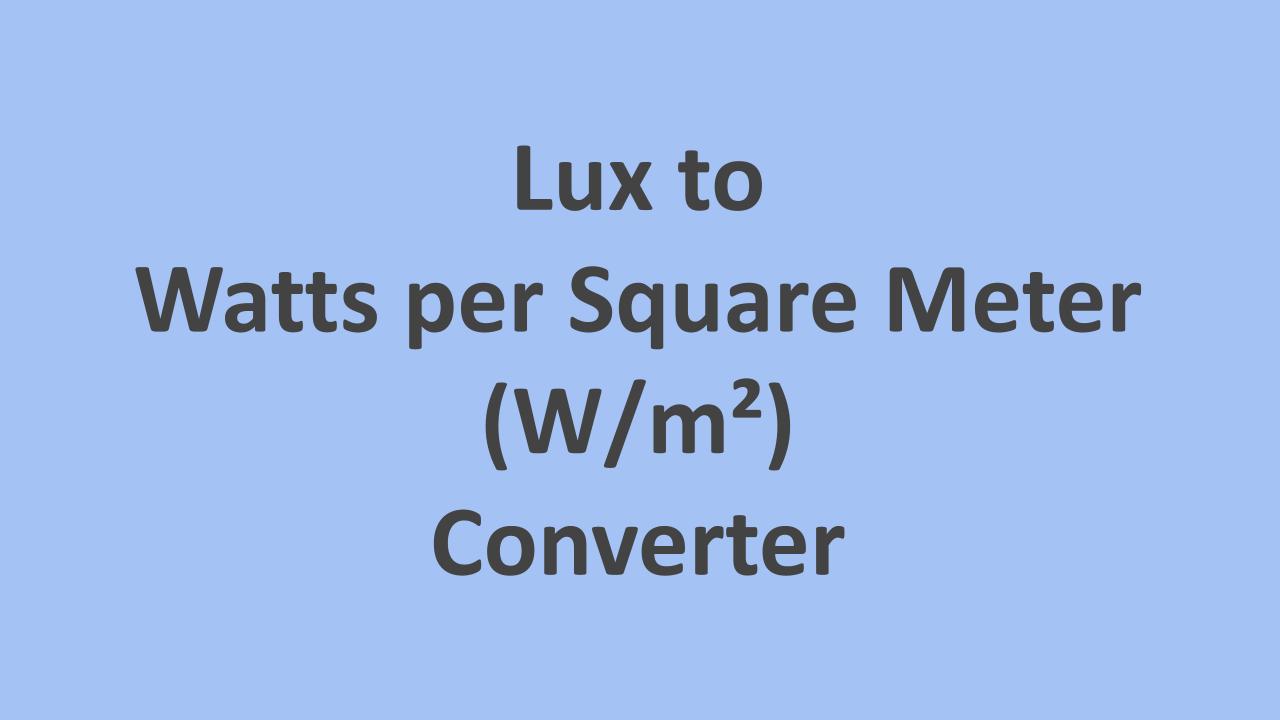Converting Lux to Watts per Square Meter (W/m²)
Lux (lx) and watts per square meter (W/m²) are both units used to measure light, but they represent different concepts.
Lux measures illuminance, which is the amount of light that falls on a surface, while Watts per square meter measures irradiance, which is the power of electromagnetic radiation received per unit area.
Enter
- Lux
- Constant (K)
the tool will calculate value in Watt per square meter
Background
To convert from lux to watts per square meter, it’s important to understand the relationship between these units and the properties of the light source, particularly its spectral power distribution and the sensitivity of the human eye to different wavelengths.
Formula
The general formula to convert lux to watts per square meter depends on the light source and its properties.
A rough approximation can be given for typical lighting conditions. For example, under standard daylight conditions:
E (W/m²) = E (lx) × K/683
where:
- ( E ) is the irradiance in watts per square meter (W/m²).
- ( E ) is the illuminance in lux (lx).
- ( K ) is a constant that depends on the type of light source and its spectrum (typically between 0.0079 and 0.015 for typical daylight and fluorescent lighting).
- 683 is the luminous efficacy of monochromatic light at a wavelength of 555 nm, which is the peak of the human eye’s sensitivity.
Practical Example
Assuming typical daylight with K = 0.015:
- Illuminance (E) in lux: 1000 lx
- Conversion factor (K): 0.015
E (W/m²) = 0.02196
Therefore, 1000 lux under typical daylight conditions roughly converts to 0.02196 W/m².
Specific Light Source Considerations
The value of ( K ) can vary significantly depending on the light source:
- Daylight: K = 0.0079
- Incandescent bulbs: K = 0.012
- Fluorescent lights: K = 0.015
The conversion factors from lux to watts per square meter can vary depending on the type of light source due to differences in their spectral power distributions. Below is a table of approximate conversion factors for different common light sources:
| Light Source | Conversion Factor (K) |
|---|---|
| Daylight | 0.0079 |
| Incandescent Bulb | 0.012 |
| Fluorescent Light | 0.015 |
| LED Light (Typical) | 0.014 |
| Halogen Light | 0.013 |
| Sodium Vapor Lamp | 0.017 |
Important Notes
- Spectral Power Distribution: The conversion is highly dependent on the spectral power distribution of the light source. The human eye’s sensitivity to different wavelengths means that illuminance (lux) and irradiance (W/m²) do not convert directly without considering this distribution.
- Precision: For precise conversions, the exact spectral power distribution of the light source should be known, and more advanced photometric and radiometric calculations should be performed.
